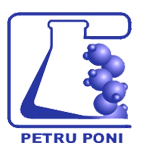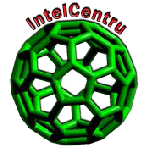|
Results
1. Negotiating meeting project results: view here 
2. Achievements to date:
Modern medicine is feverishly seeking new paradigms, techniques and “tools” to diagnose and cure an expanding range of diseases, including for some rare and highly aggressive illnesses for which no pharmacologic principles or surgical approaches exist. This is why new scientific domains are envisioned, even if they are still in the pioneering stage. One of these domains is the gene therapy, which aim at correcting the effects induced by the deviant or mutated genes, either by substituting them with correct functional ones, by including supplemental genes into the genome, or by suppressing their expression. The intended effect is to compensate, to control, or to correct the aberrant expression of morbid genes. One of the most cited definition of gene therapy claims that “it aim to treat gene and infectious diseases by selectively manipulating (introducing or silencing) the genetic information of certain / specific cells, which are affected or not by the alteration of gene expression”.
PN-II-ID-PCCE-2011-2-0028 project is enrolled in the effort of producing appropriate “tools” for the scientists who are involved in studying gene (re)programming and / or silencing. The particular approach of the project is to mimic the structures and the mechanisms of genetic information “handling” operated by biologic machineries. In this respect, the synthesis and characterization of some nano-scale entities are gradually approached, especially by techniques of (bio)macromolecular chemistry.
The scientific-oriented activities implied by the project derive from its three main generic objectives: (i) the structural and functional design, and the synthesis of complex chemical edifices, bearing chemical groups of interest in mediating the extracellular transport and the intracellular trafficking of the resulted nano-entities (including membrane-penetrating peptides), (ii) building of cargo-complexes between the synthesized entities and nucleic acids, through the self-assembling of the individual nano-entities, or by their association with nanoparticles of various types (including magnetic and composites of biomacromolecules with calcium and phosphorous salts), and with structures comprising fullerene derivatives, (iii) the evaluation of binding and transport capacity of the resulted cargo-complexes, followed by the validation of their functionality as non-viral gene vectors.
Scientific Report 2012-2015 - 
Scientific Report 2016 - 
Final Scientific Report 2012-2016 - 
|
|







